
Christmas Celebrations in Palma de Mallorca
Get into the festive spirit at Palma's annual Christmas Fair.

© JBennett

© JBennett
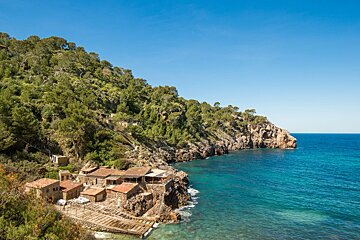
© J. Bennett
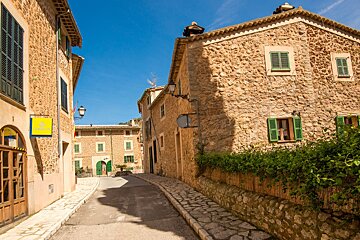
© JBennett

© Jose Rains
Pretty coastal village on the west coast of Mallorca
Deià is an idyllic village of green-shuttered, honey-coloured houses that has become a millionaires' hideaway resting in the shadow of the Teix mountain, part of the Serra de Tramuntana mountain range. It may have been just another pretty west Mallorcan village had the famous English poet and novelist Robert Graves not decided to make it his home in the 1940s, raising its profile somewhat.
Graves moved to the village in 1929, leaving in the the thirties during the Spanish Civil War, returning in 1946 with his wife and family to make it his permanent home until his death in 1985. Muses followed, friends came to stay and, before long, Deià had established a reputation as a foreign artists' colony. Graves was hardly the first to discover Deià, an 1878 guidebook noted its "collection of strange and eccentric foreigners" and it has stayed that way ever since.
Today the village is still very much an artist’s town with a number of art galleries and gift shops, along with a good selection of restaurants. Controlled urban expansion has meant that this little village has kept its traditional beauty and charm in spite of all the goings on. Now found on every tourist itinerary as a prime example of ‘the other Mallorca’, it has become a popular haunt for the rich and famous, including visitors like Richard Branson, Princess Diana and Andrew Lloyd Webber. Foreign residents, which make up half of its population, are certainly affluent , evident in the average house price for the municipality. These expats not only respect, but immerse themselves in the traditional Mallorcan life created and preserved by locals from the area.
Being a part of the Serra de Tramuntana mountain range, awarded World Heritage Site status, means that Deià is surrounded by some of Mallorca’s finest landscapes. There is a relaxed vibe here but, at the same time, it's a popular place for cycling and hiking enthusiasts to base themselves.
The main event in town is the Deià International Music Festival which takes place every summer between May and September across some of the village's most iconic buildings. It features an array of different music concerts taking place throughout the festival, from solo pianists to full orchestras.

Get into the festive spirit at Palma's annual Christmas Fair.

The Puerto Portals Christmas Market is one of the most popular in Mallorca and it will be open until January.

The charming Pueblo Español, a reconstructed Spanish village near the centre of Palma, turns into an outdoor market at the beginning of December.

The German community in Santa Ponsa celebrate their very own 'Weihnachtsmarkt' every year at the Polígono Son Bugadellas.

A spectacular Christmas show, a festive market, ice skating and more at Mallorca's legendary entertainment venue.

Jazz Voyeur Festival, established as the point of reference for high-quality jazz music in the Balearic Islands thanks to its remarkable track record, presents an artistic line-up that once again manages to bring great national and international artists to Mallorca.
The name Deià (or 'Deya') comes from the Moorish conquest of Mallorca between the 10th and 13th centuries. They called the area 'Ad-Daya' which means 'village' and, during their time here they created the terraced irrigation systems that allowed the steep hillsides to be cultivated for farming. Olive trees flourished up to an altitude of 600 metres, and today cover much of the hillsides above the town.
After the Christian conquest in 1229, Deià was presented to the Count of Rosselló and became a part of Valldemossa. In fact, the towns of Valldemossa and Deià formed a single municipality for over three centuries. However, after decades of fighting for independence, Deià became an individual town in 1583. On this date, its inhabitants began building a church on a nearby hill. In the centuries that followed, the village flourished due to its olive cultivation, along with fishing and farming of citrus fruits, and the population grew to 1,500.
Since the 19th century, Deià has famously attracted artists, musicians and those in search of a bohemian lifestyle. The Archduke Ludwig Salvador of Austria was so captivated by the area that he purchased several estates: Miramar, now a hotel, and Son Marroig, a wedding venue that also hosts annual festivals and concerts. Robert Graves made his family home here; named Ca N'Alluny, it is now open to the public having been turned into a museum in 2005.
Deià’s charm lies in its serene ambiance and breathtaking surroundings, offering visitors a relaxing escape with stunning sea and mountain views. The village is known for its leisurely dining experiences, scenic walks, and visits to the picturesque cala.
If you find yourself in Deià, a visit to Robert Graves’ former home is a must. You’ll feel as though you’ve stepped back in time, with much of the original charm and atmosphere lovingly preserved. Wander through rooms filled with his personal belongings, including a well-thumbed guestbook, and take in the peaceful gardens filled with orange, lemon, almond, and olive trees.
If you’re a fan of Graves’ writing, take a stroll along Carrer es Puig, the village’s main street. Follow the ceramic Stations of the Cross up to the 15th century Parish Church of San Juan Bautista. Just behind it, in a quiet cemetery, you’ll find Graves’ resting place marked by a simple stone that reads "Robert Graves Poeta 1895–1985". For a deeper look into his life on the island, you might enjoy reading Wild Olives, written by his son William Graves.
Looking to indulge? Head to La Residencia, a former Sir Richard Branson property now run by Belmond hotel chain. Now a luxury escape it has welcomed famous faces like Princess Diana and Robbie Williams. You can visit for afternoon tea and enjoy homemade scones and pastries, fine teas, and even a glass of champagne if you’re celebrating something special. There's even a gallery called Sa Tafona, where you can view works from cherished artists Joan Miró, David Templeton and Arturo Rhodes who all spent time in Mallorca
For a bit of history, visit Es Clot, the local archaeological museum set in a charming old mill. Founded by Dr William H Waldren, it showcases fascinating finds from sites around the island, including ancient tools and the remains of the now-extinct myotragus, a native mountain goat.
The main coastal road passing through Deià can get busy, and parking is scarce in summer.

The monastery in Miramar can be found close to Valldemossa on the road to Deia. It was founded by King Jaume II in 1276 as a missionary school following a request by Ramon Llull (a 13th-century theologian and philosopher).
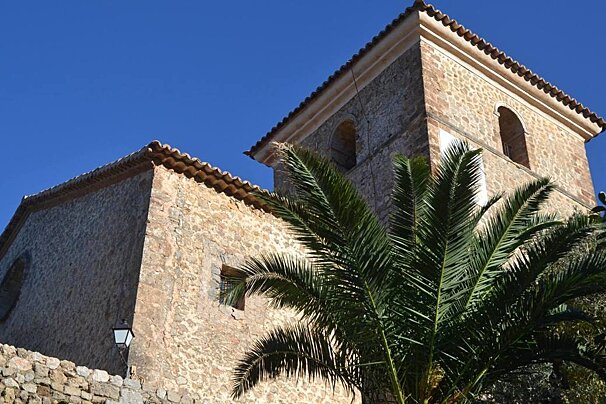
Poet and author Robert Graves (1895-1985) lived in Deià, Mallorca, from 1929 until his death. He is buried in the churchyard on the hill next to the church.

Of all the famous foreigners attracted to Mallorca's northwest coast, none is so admired locally as 'S'Arxiduc', Archduke Ludwig Salvador. Born in 1847 in the Pitti Palace, Florence, the son of Leopold III of Tuscany and Marie Antoinette de Bourbon, he came to Mallorca 20 years later to escape from Viennese court life and immediately fell in love with the island.
From Deià you can walk down to Cala Deià. It takes about 30 minutes on foot to reach the small shingle beach set in an attractive cove. Be warned, or perhaps be inspired, local artists continue the Graves tradition of naked swimming and long parties at weekends. There are two restaurants here, with fresh fish as their speciality although they are only open during the summer season.
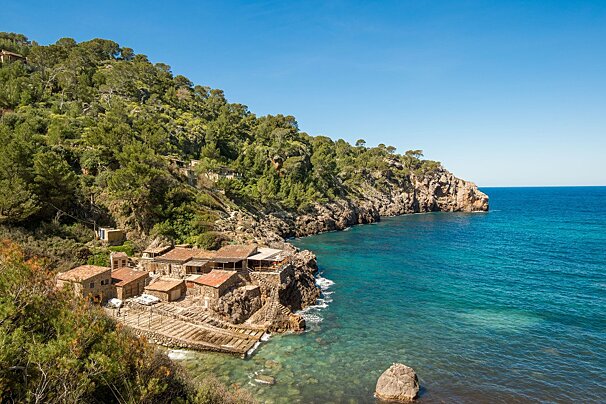
Cala Deia is a very beautiful small rocky cala with clear waters and rock pools, one of the few beaches on the west coast of Mallorca. It's quite a rugged beach here so you might need to bring a chair or a lilo to lie on.

The Port of Soller offers the only sandy beaches on the west coast of Majorca. This lovely little resort offers two beaches along it's horseshoe bay, all with golden sands and clear blue seas.
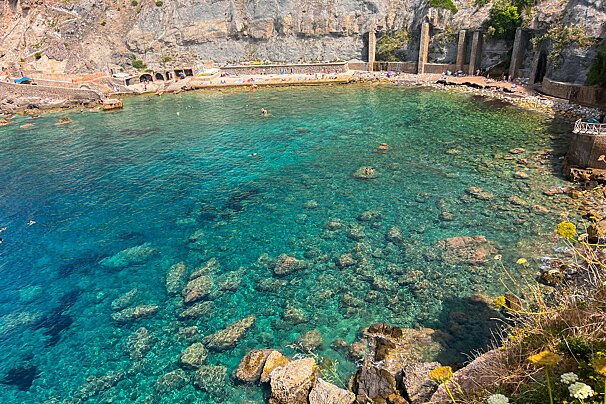
Offering a distinctly different experience from the more typical Mallorcan beaches, Banyalbufar is carved into the dramatic foothills of the Serra de Tramuntana. This small bay bears a few signs of regular usage, with terraced slopes and protective structures that blend harmoniously with the natural surroundings. Once difficult to access, Cala Banyalbufar is now easily reachable via a windy round, allowing all to discover its quiet beauty.
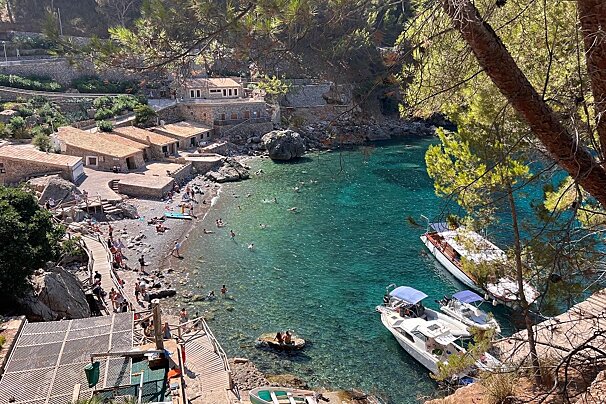
One of Mallorca’s most talked about treasures, Sa Calobra, forms an unusual cove found at the head of a gorge of the Torrent de Pareis. It’s curious location and dramatic surroundings have inspired artists for many years and still do today.
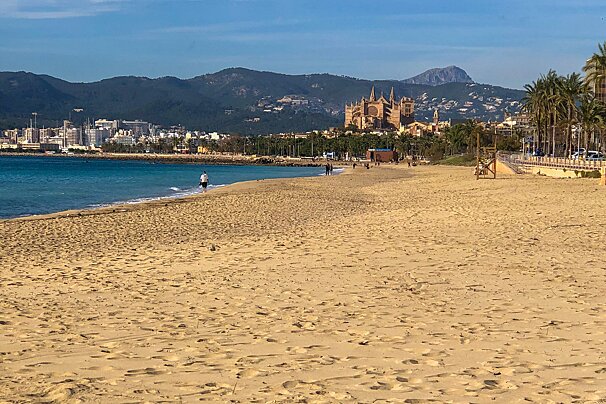
The closest beach to Palma is at Ca'n Pere Antoni. This stretch of golden sandy beach starts just beyond the cathedral. A promenade and cycle path runs along its length but behind these lies the main road that takes you to Palma airport.
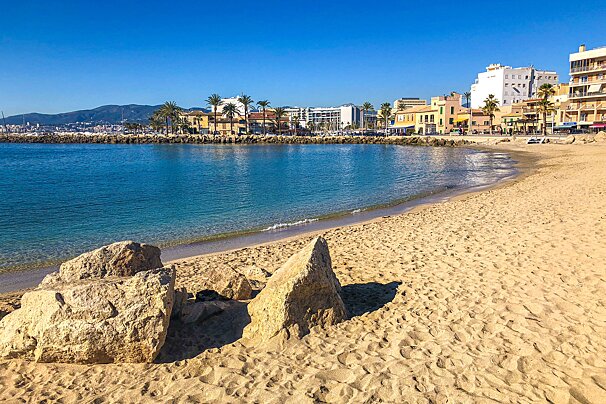
Portixol is found just to the east of Palma's cathedral and is home to a little bay within which a little sand and shingle beach known as D'es Portitxolet Beach resides. The water is generally calm here due to the sheltered nature of the bay.
You’re in for a treat when it comes to dining in Deià. The village is known for its top-quality restaurants that attract a stylish and well-heeled crowd.
For something more rustic and truly Mallorcan, seek out one of the traditional spots tucked into beautifully restored old buildings. Think stone walls, flickering candlelight, and a relaxed, elegant feel. If you’re in the mood for something more low-key, there are cosy tapas bars where you can enjoy delicious small plates in a friendly and informal setting. Craving paella or local classics without any fuss? There are simple, no-frills eateries where the focus is all on flavour.
Just a short walk or drive from the village brings you to Cala Deià, where you can tuck into fresh seafood right by the water. Some places are perched right on the rocks, giving you jaw-dropping sea views while you dine. Others are just across the cove, offering equally lovely vistas and a laid-back, rustic atmosphere with a strong focus on dishes from the sea.
In the village itself, you’ll also find a few international options. There are stylish spots serving up Asian-inspired dishes packed with flavour, often with lovely views of the mountains. If you’re in the mood for Italian, you’ll come across inviting restaurants offering fresh pasta, wood-fired pizza, and all those rich Mediterranean favourites in a warm and welcoming setting.
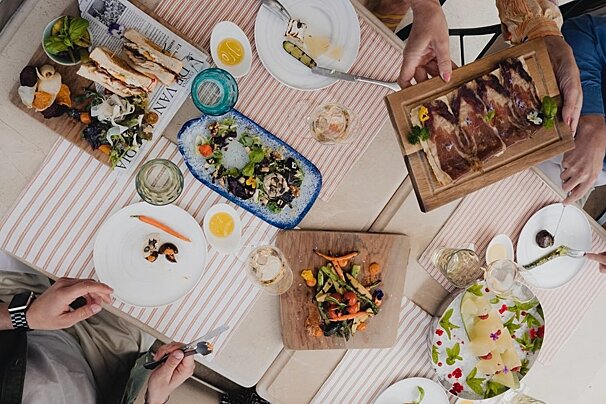
Belmond La Residencia has a relaxed restaurant open to residents and non-residents called Miró. They serve food and drink all day from 12:30, offering a varied menu for lunch and a gourmet tapas menu throughout the day and for dinner.

In the heart of Mallorca's northern mountain range is Sa Pedrissa, a 17th century rural estate set between the sea and the mountains.
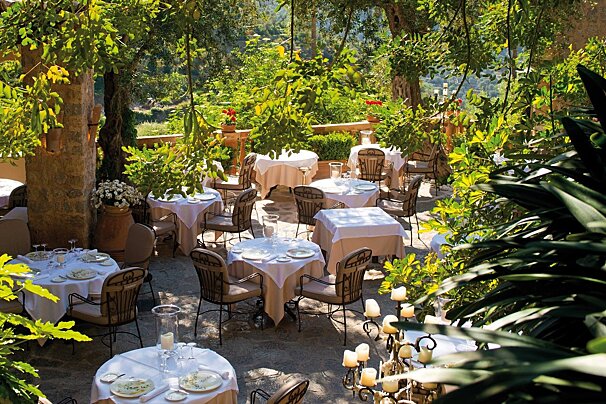
The El Olivo restaurant is the crowning jewel of the renowned Belmond La Residencia and perhaps one of the finest restaurants in Mallorca - here the art of dining is taken to the next level: the seduction of the palate.
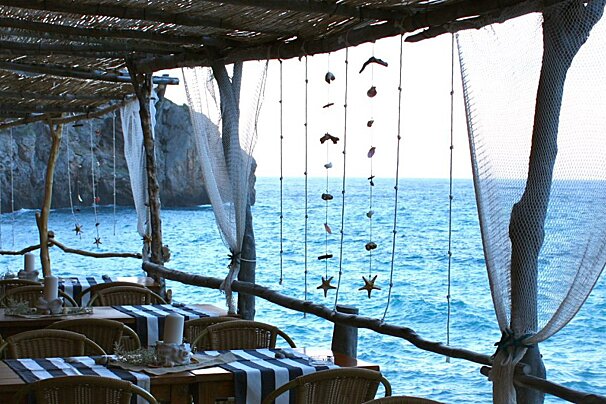
Dramatically set on the rocky cliffs of Cala Deià, Ca's Patró March is a beloved Mallorcan seafood haven that offers more than just a meal—it delivers an unforgettable slice of Mediterranean life.

This restaurant is located on Deia's main street. Enjoy a delicious Asian meal on the terrace with stunning mountain views.

Sa Vinya sits nestled against the dramatic hillside with great views of the Tramuntana mountains all around.
A second-home haven to the rich and famous, whilst Deià doesn’t boast any nightclubs per se, it sees a fair share of impressive private parties and has a couple of trendy cocktail bars to try. Alongside the International Music Festival and Deià Art Festival, the summer nightlife here is often tastefully animated.
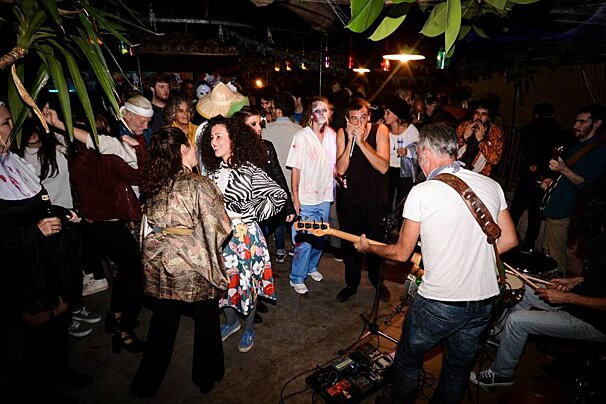
Opened in 1988, this bar rapidly became a hotspot where Deia's famous inhabitants and visitors would gather and play music at some of the most legendary parties on the island. Nowadays, it still attracts big names in the music scene.
A trip to Deià is all about getting some downtime in a peaceful setting, sitting on terraces, soaking up the Mediterranean sun and enjoying spectacular views across the mountains. At the same time, being located in Mallorca’s legendary Serra de Tramuntana mountain range means Deià is also a wonderful base for the outdoorsy type who enjoy hiking, cycling and more.

One of the most popular stages of the GR221 and Mallorca’s dry stone route. It is without a doubt one of the most stunning walks on the island. The walkway follows the summit ridge with spectacular views down to the sea.

A linear walk that follows what once was the old road that connected Deia with Soller. It was a vital trade route between the two and is now a restored stone path for most of the walk. It is also part of Mallorcas GR221 or Dry Stone Route.
Many of the most popular cycling trails on the island travel straight through the village of Deià which means cyclists donning their best lycra are a common sight in the cooler months on the island. The twisting ups and downs provide thigh-busting workouts and, whether you fancy the coastal route or exploring some of the inland beauty spots, there are dozens of routes to choose from.
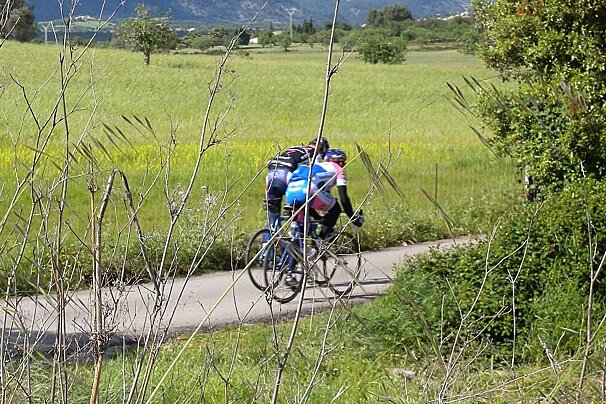
The southern end of the Sierra Tramuntana does not have the epic climbs of the north, however this rolling ride provides no less than six different summits as well as some of Mallorca's most scenic roads.
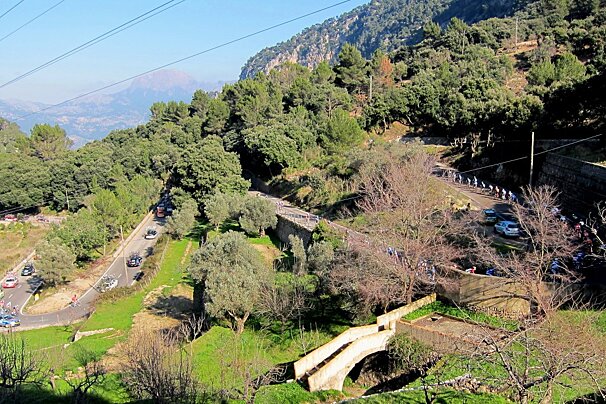
Cycling from Port de Soller along the coast and through Deia, you will then travel on to Valldemossa before heading back inland and finishing over the Coll de Soller.
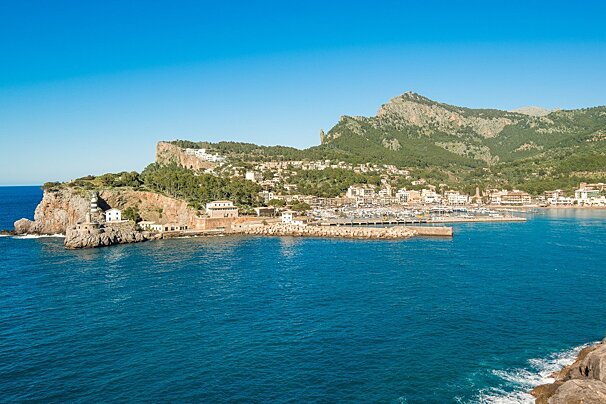
Starting and finishing in Port de Soller this ride has a half way point in Cala Deia where you ahve the chance to stop for some lunch, a snack or even a dip in the sea to cool off.
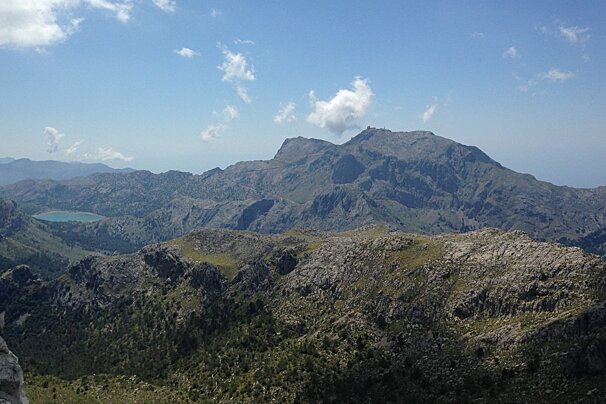
With undulating roads and an altitude gain of almost 2000m this relatively short ride, at just 75km, will get your lungs and your legs pumping.

The road to Sa Calobra is one of the reasons so many cyclists come to Mallorca. With an average gradient of 7% (maximum gradient is 12%) and a height gain of 668m over 9.4km it is sure to test the most professional thighs.
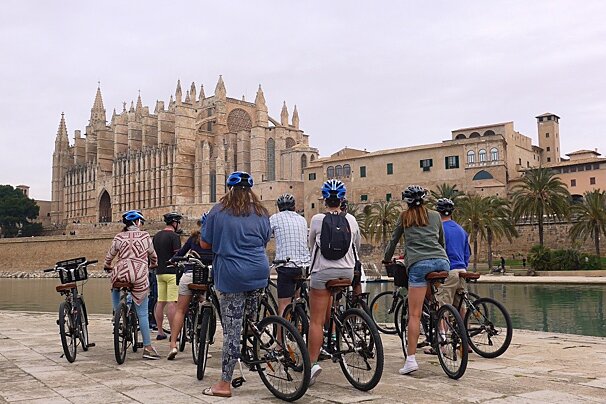
Palma is a really bike friendly city. The giveaway is the prominent red cycle route running all along the Paseo Maritimo and through the city centre. The weather is perfect for it too. Despite the obvious benefits of urban exploration on two wheels, Palma on Bike was my first experience of cycling in the capital.
There are plenty of hiking trails in the hills above Deià, thanks to the ancient paths created by Archduke Salvador that link many of the quaint mountain villages in the Serra de Tramuntana.
Check at the tourist office for maps and trail information, but the most famous is the GR221 Stage 3A (the dry stone route) from Valldemossa to Deià. For part of this trail, you will join the Archduke's bridleway, an old cobbled path built by the Austrian Archduke Ludwig Salvator in the 1860s and 70s along Mallorca’s stunning coastline. It’s a five-hour walk, so not for the faint-hearted but well worth it.

Valldemossa is located near the west coast of Mallorca. This walk was mapped out by Archduke Ludwig Salvatr during tours of his estates by mule.
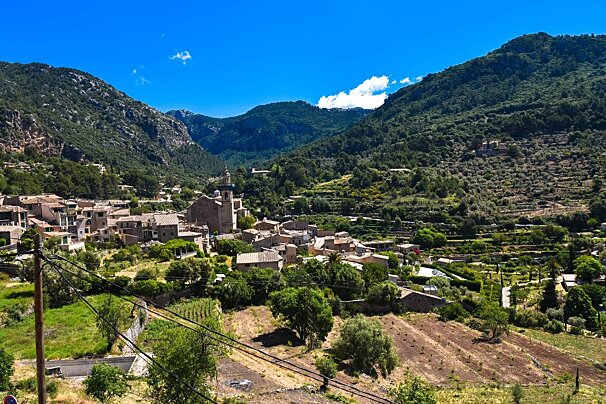
Valldemossa is located towards the west coast of Mallorca. The bus line to Valldemossa, Deia and Llucalcari allows access to some fantastic places of interest, the woods and mountains, and some tranquil coves to swim in.

This route includes an attractive ascent on cobbled paths via the Mont-Reials path and a descent via the Rocafort joined by a stretch of the Castello path. This walk captures some of the best views of the Soller valley.
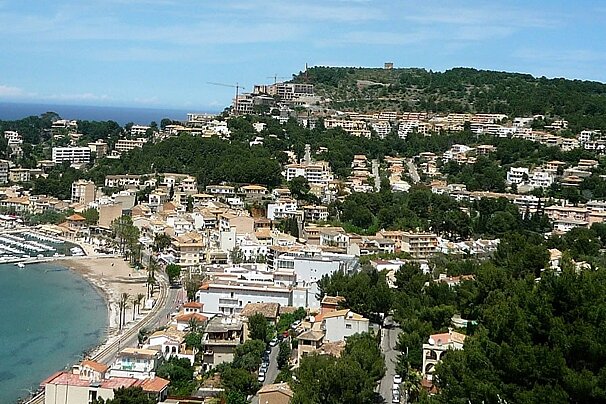
This trip actually begins in Palma, where one takes the electric train that joins Palma to the 'valley of the oranges' - Soller.
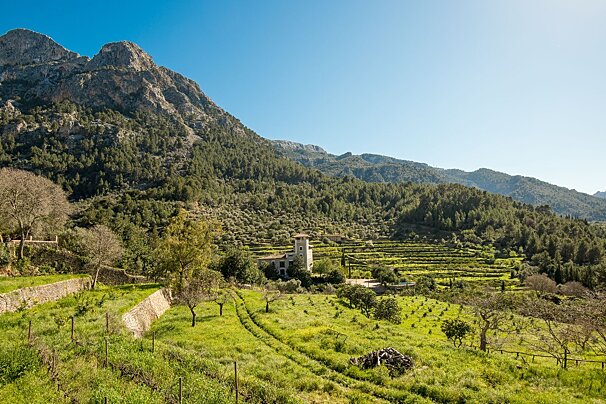
Leaving Soller and hiking through the Serra de Tramuntana valley this trail follows cobbled paths that lead to a unique sequence of cliffs, crags and stone slopes. The area was declared an asset of Cultural Interest in 1984.

The family was reunited and the sun was blazing as we left Soller for Fornalutx on the hunt for lunch.
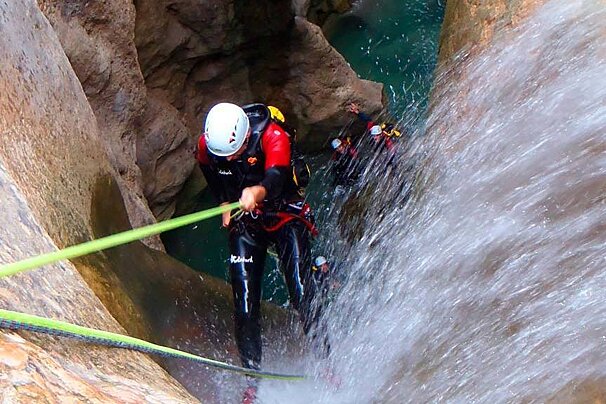
Mallorca has a great variety of canyons suitable from beginner level to advanced, with each of them offering a unique experience.
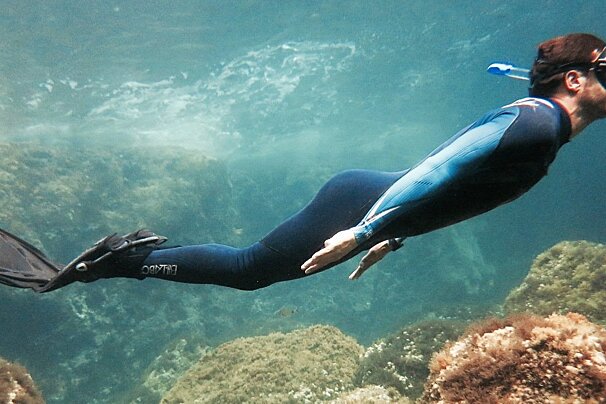
Swim in the crystal clear waters on the north-west coast and discover its stunning underwater world on this snorkelling trip

Daily trips for certified divers in a great diversity of dive sites

Enjoy an exhilarating day trekking and scrambling through gorges, waterfalls and jumping into giant rock pools.
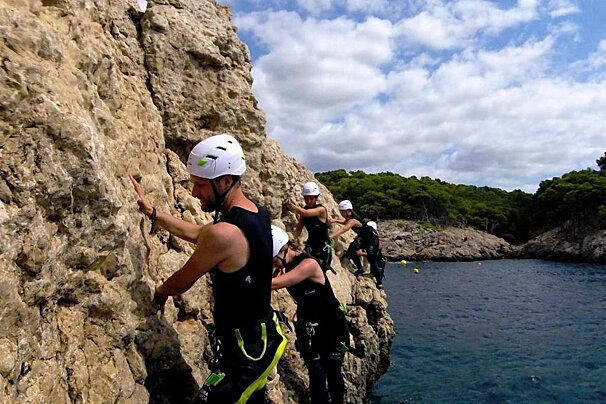
An exhilarating rock and water activity suitable for families and adrenaline-junkies, a great way to explore the coastline of Mallorca.

Lessons delivered at your villa pool by qualified, insured and highly experienced instructors.
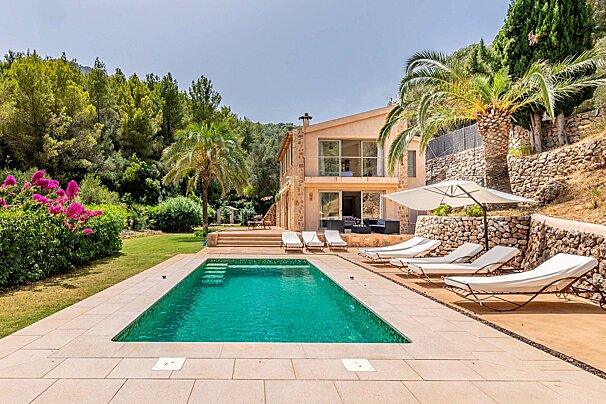
Villa Can Sort is located in a picturesque setting surrounded by the Serra de Tramuntana, for a relaxing holiday. It is a short drive from the old town of Soller, as well as the beach and restaurants of Puerto de Soller.
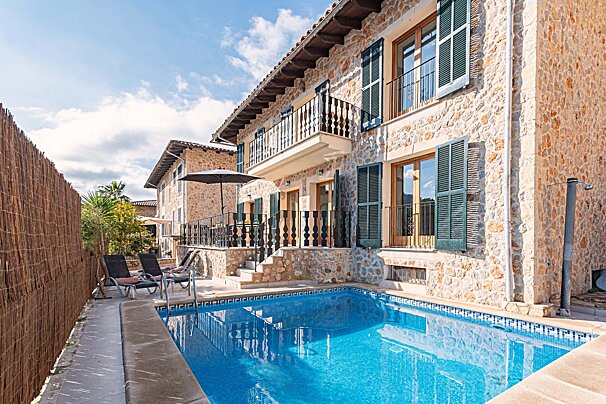
Cosy family house of 270 m² in the centre of Valldemossa. High quality finishings and modern equipment, swimming pool (5 x 5 m) and large terrace. An ideal accommodation for a perfect holiday in the Serra de Tramuntana.
Staying in short-term rental accommodation in Deià is a wonderful way to experience the village’s laid-back charm and natural beauty in your own time and space. Often set in traditional buildings with mountain or sea views, apartments are ideal if you want a simple, comfortable base whilst exploring the area. With the freedom to cook, relax and come and go as you please, it’s a great option for anyone who enjoys a slower pace surrounded by natural beauty.

Villa Can Sort is located in a picturesque setting surrounded by the Serra de Tramuntana, for a relaxing holiday. It is a short drive from the old town of Soller, as well as the beach and restaurants of Puerto de Soller.

Cosy family house of 270 m² in the centre of Valldemossa. High quality finishings and modern equipment, swimming pool (5 x 5 m) and large terrace. An ideal accommodation for a perfect holiday in the Serra de Tramuntana.
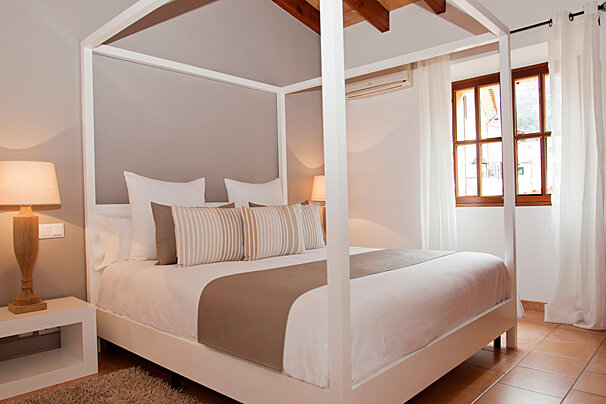
These lovely apartments share a great view of the Tramuntana mountains, and have all been tastefully decorated, giving you the feel of a home from home.
Luxury hotels in Deià offer a unique blend of charm, heritage and refined comfort, perfectly suited to the village’s artistic and tranquil atmosphere. Often set in beautifully restored historic buildings, many of these hotels feature traditional Mallorcan architecture, antique furnishings and elegant decor that reflect the area’s character. You can expect lush gardens filled with olive and citrus trees, serene swimming pools, full-service spas and fine dining with views of the mountains or sea. With a strong focus on personalised service and attention to detail, staying in one of Deià’s luxury hotels feels more like being welcomed into an exquisite private home than a typical resort.
There are a few boutique-style hotels in and around the town set in renovated buildings from the 17th century onwards which retain many characterful original features. These hotels offer a more intimate vibe.
If you want to be in the centre of Deià, there are a couple of small hotels which are a little more budget-friendly. These establishments are simple in decor with traditionally furnished rooms, swimming pools and small restaurants offering delicious local cuisine.
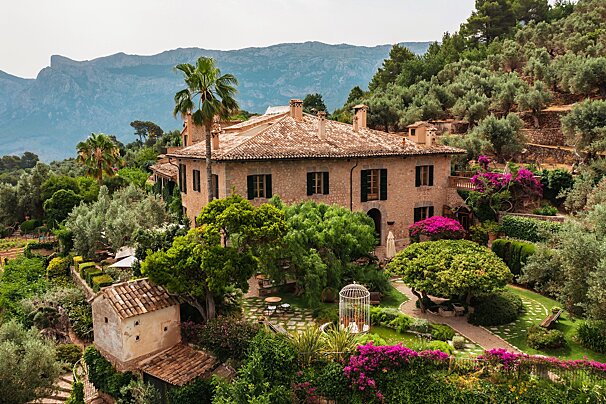
Ca's Xorc Luxury Retreat is the place to stay if you're looking for somewhere that's rich in history but with all the modern amneties. Breathtaking views, gourmet cuisine and a relaxing environment, the ideal place for a peaceful stay in a beautiful location.

A new concept in accommodation that promises to surprise and delight you, and where you are guaranteed to feel at home.
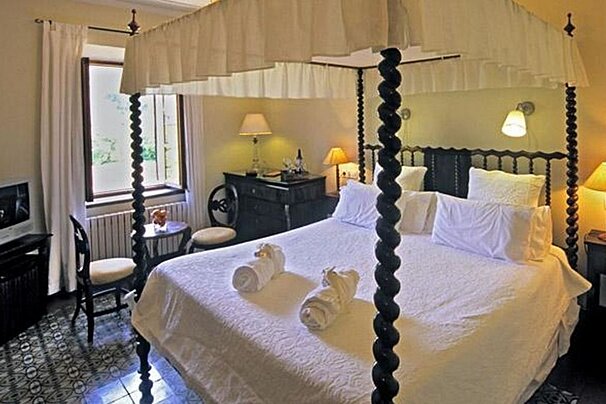
Located in the extraordinary valley of Sóller, close to the main square of the village and 3 km from the sea, this hotel is elegantly decorated and offers 4 comfortable junior suites and 1 double room, separated from the manor house and each of them with independent entrance.
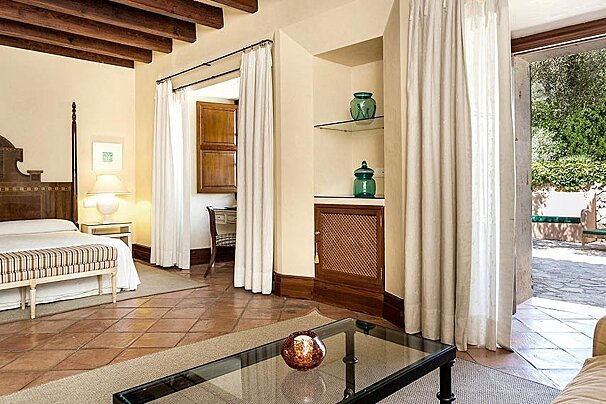
Situated in the heart of the valley, on top of a hill from where you can enjoy views over the bay of Palma from one part, and the Tramuntana mountain range and the monastery from the other.

This unique bed & breakfast offers eco-friendly accommodation in one of the most beautiful natural setting in Mallorca.
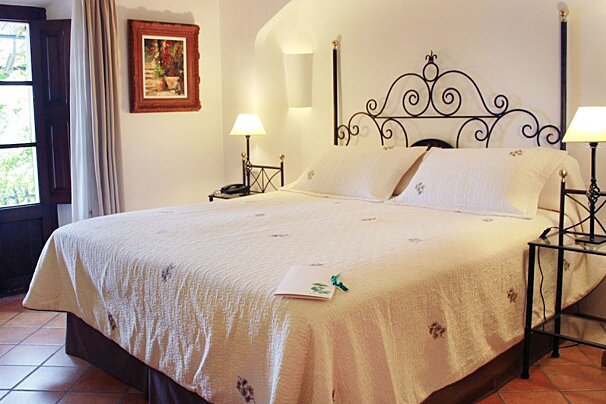
In the heart of Mallorca's northern mountain range is Sa Pedrissa, a 17th century rural estate set between the sea and the mountains. From the terraces of the house, visitors can enjoy unparalleled views over the Mediterranean sea and the verdant mountains.
Car hire is a viable option in Mallorca and Deia is a 45 minute drive from Palma airport. Or take the worry out of getting from the airport and book a transfer.
There is no direct bus from the airport.
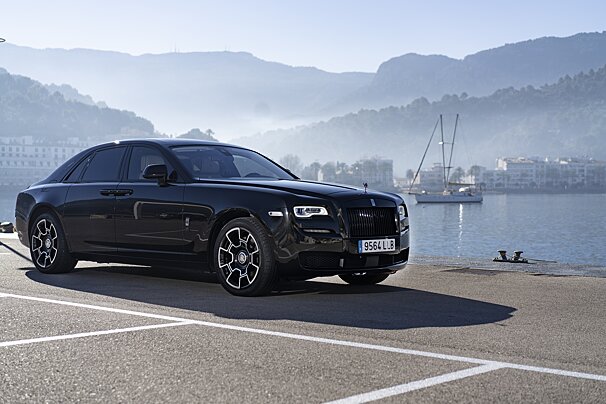
Experience luxury and convenience with this company. Arrive at your yacht charter, sunset tour or boat trip in unparalleled style in a Rolls Royce Ghost.

The established company have been offering a reliable, reasonably priced, private transfer service in Mallorca since 1993.

A group of taxi drivers with many years of experience in the sector of airport transfers in Mallorca. You can book online in advance or call to book last-minute.

Multilingual company offering transfers from the airport to your destination.

The only British taxi driver in Mallorca, offering airport transfers to destinations throughout the island.

Great quality service at rates that are irresistible. This company exclusively transfer you around Mallorca without having to pay an excessive price.
Find out all about what is happening in Mallorca and how to make the most of your time here. The latest news, reviews of fun activities, fabulous beaches, current events and the trendiest restaurants, as well as interviews with leading locals, insider's guides and our top choices for things to do, see, and experience on the island.
See allLatest News & ReviewsThe island hosts all sorts of events, including agricultural fairs in the spring and autumn, live music and DJs in the summer, religious fiestas and international sporting events. Some of the most popular are the Mallorca 312 cycling race in April, the Copa del Rey sailing regatta in July and the Moors vs Christians mock battle in September.
See allUpcoming Events